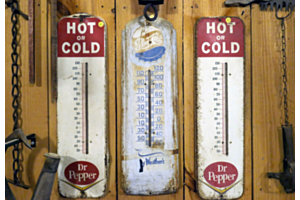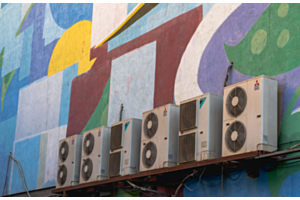Monthly Archives: November 2020
-
November 30, 2020
Although you’re not installing your ductless mini split system yourself, you still want to ensure everything is set up the right way so you can maximize your home’s heating and cooling potential. That has you curious about the condensing unit and where it should go. Should it be closer to your house or further away?
Let’s answer that question in today’s post.
What Is the Condensing Unit?
Before we get into condensing unit placement, let’s make sure we’re talking about the same unit here. The condensing unit is also known as the condenser or the compressor. It’s one of the key parts of your ductless mini split system.
Unlike the air-handling units, which go in the various rooms of your home, the condensing unit stays outside. When your ductless mini split system begins running, the indoor unit the removes either the heat, cold, and or humidity from
-
November 23, 2020
A two-zone ductless mini split system is a heating or cooling solution intended for more than one zone. If you need a refresher, a zone is an area of your home–not necessarily a room–that has different heating and cooling needs than other zones.
Anything more than single-zone heating or cooling is known as a multi-zone ductless mini split system, and that includes a two-zone unit. If you’ve decided that your home needs more than one air-handling unit to stay comfortable, where should you put the second unit in conjunction with the first?
Here are some two-zone mini split applications we see quite often.
One
-
November 16, 2020
For years, you’ve relied on an outdoor central air conditioning unit and a heater or furnace where the unit was down the basement. Once you did some numbers crunching and realized how much more financially and environmentally efficient a ductless mini split system could be, you were sold.
You’ll soon have your mini split system installed, which will include several indoor units in main rooms such as your living room, bedroom, or entertainment room. Where on the wall should you mount these indoor air-handling units? We have some ideas to share with you today.
Symmetric with the Window
If your indoor unit will go in a wide, spacious room with a lot of windows such as a living room or den, you might not be sure where to mount the unit in conjunction with the windows. Our recommendation? Align the air-handling unit with the windows, keeping them the same height.
For instance, your indoor unit would be as high as the tallest point of the window.
-
November 09, 2020
You’ve had it with your current HVAC setup. All year, your air conditioner or heater blows throughout various rooms, sometimes in spaces that don’t even need it, wasting your money. You want to switch to a ductless mini split system, but something is giving you pause. You have a rather large home or a commercial building which is divided into many zones. You’re wondering if a mini split system could have enough zones for you.
In today’s post, we’ll talk in more detail about zones, including how many zones you can get out of a mini split. Keep reading!
What Are Mini Split Zones?
First of all, what are zones? A zone is any area that’s a contender for an indoor mini split unit. Depending on the home or building, a zone can be an entire room or part of a room. For instance, maybe you have a large warehousing building. The central room has electrical equipment that makes it warmer on that side than the other side. That one room could be considered more
-
November 02, 2020
Around the world, life has been permanently altered by an airborne virus known as COVID-19 or the coronavirus. You were likely spending more time outdoors all summer to mitigate the spread, but now that the colder weather is here, you wonder if your current ventilation system is sufficient enough.
In this informative post, we’ll answer your most pressing questions on whether switching to a ductless mini split system in light of COVID-19 is a wise idea.
What Is COVID-19?
COVID-19 is the disease spread by SARS-CoV-2, a type of coronavirus. Since being discovered in late 2019, COVID-19 has become a worldwide pandemic, with such parts of the planet as the United States, the United Kingdom, and India leading the spread.
COVID-19 can cause such symptoms as diarrhea, vomiting and nausea, runny nose, congestion, sore throat, lack of smell or taste, headache, body aches, fatigue, cough, fever, and breathing issues. Not everyone who has COVID-19 necessarily






